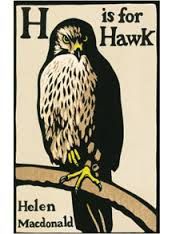 THE OLD WAYS
THE OLD WAYS
A Journey on Foot
By Robert Macfarlane
Illustrated. 433 pp. Viking.
I am lucky enough to live in Aurora, CO, on the eastern side of the Denver metroplex. I know full well that some from more fashionable parts of town sometimes scoff at our burg and think it a backwater. Still, it has some of the best eating and friendliest people around and for me there’s a bonus in the fact that just a 10 minute walk from my house I can share the day with hawks and eagles, egrets and pelicans, coypu, deer and beaver, in some lovely wild scenery. Coincidentally or not, I have recently been reading quite a bit about the natural world. So in this month’s newsletter we have not one but three, albeit short, book reviews. All three happen to have another book at their core and all involve human interaction with the natural world.
The first of these is The Old Ways: A Journey on Foot by Robert Macfarlane. It was given to me by an old, friend, Cathy Hull, and it’s one of my all-time favorite books. On one level it’s a travelogue of walks taken in England and Scotland and further afield in China, Spain, the Himalayas — but it’s as much an internal journey as an external one. Central to the narrative and spirit of the book is the work of the Anglo-Welsh poet and author, Edward Thomas. Written in taut prose that is nonetheless rich and poetic, the book charts inner and outer journeys. It is abundant with observations on geology, history, plant and animal life, architecture, and insightful ruminations on the human being and our place in the natural world.
While the book recounts what one would think of as a solitary experience, it teems with fascinating people living lives of connection and passion.
This is a book than can be profitably dipped into at any time and one that will stay with you a long time.
 H IS FOR HAWK
H IS FOR HAWK
By Helen Macdonald
300 pp. Grove Press.
Another book that was recommended to me by Cathy was H is for Hawk. This book recently won the Costa Prize and it, too, is a treasure. It’s a fiercely honest account of Helen Macdonald’s coming to terms with her father’s death and how she worked through her grief by training a goshawk — a notoriously difficult bird to bend to one’s will. The ruling spirit of this book is an earlier book, The Goshawk by T.H. White (The Once and Future King is his most famous book). I read The Goshawk many years ago — it was one of the few books I brought with me when I moved to the US — and it was a book that captivated me, as it did the author of this book. There are no trite solutions in this book and no myths of bonding with a wild animal. It is, rather, a book of deep acceptance of the way things are and how those who have a deep history in a place are perhaps the most fortunate among us.
 THE SHEPHERD’S LIFE
THE SHEPHERD’S LIFE
Modern Dispatches From an Ancient Landscape
By James Rebanks
Illustrated. 293 pages. Flatiron Books.
On that theme, I come to a third book: A Shepherd’s Life by James Rebanks. This book, too, was inspired by another. In this case it was A Shepherd’s Life by W.H. Hudson (1910).
Rebanks was born and raised on a sheep farm in the English Lake District and his school career was a disaster. He was written off as a failure and was happy to be thought so, but he changed his mind about reading and learning when he came across and read Hudson’s book. Thrilled to find “people like us” therein, he acquired the habit of reading voraciously, and attended night school. On the urging of a teacher, he applied to Oxford University and was accepted. At no point, though, does he ever think about permanently leaving the fells and the sheep and the old way of life. When he finishes at Oxford, he returns to his home and former life.
The book recounts a year in the life of a shepherd — the joys and frustrations, the beauty and the misery and the unsentimental pride in having deep roots in a place and pride in one’s work.
The prose is … well, a little prosey at times, but is equally poetic and moving at others. It reads easily and eloquently and there’s a kind of matter-of-factness about it that’s quite refreshing if, at times, perhaps a little disingenuous. His recounting of his disastrous school career and his later triumphant acceptance by Oxford feels a little glossed over and not feel quite like full disclosure. And his insistence with his children that things be done the proper way, feels like there might be a tyrant in the making. It is, as his four-year-old daughter says, “all about the sheep”. Still, it’s a remarkable book and a timely one. While there is evidence that many of the old ways of life and living are making a comeback among younger generations, many communities are under siege by the modern world as old values and traditions are threatened.
